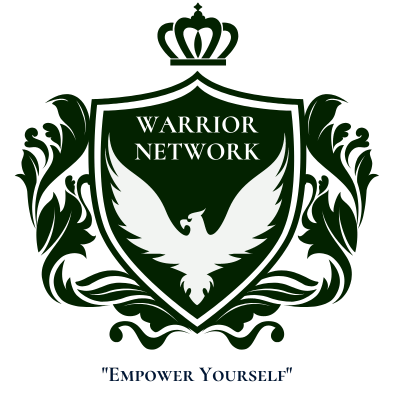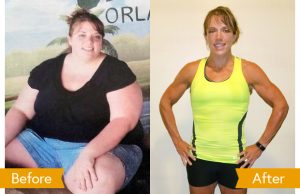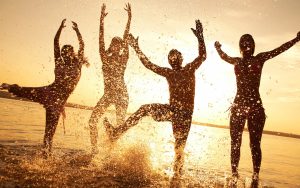Most people view body fat as relatively harmless and merely something we want to banish to look and feel better, but did you know that certain types of dangerous fats that are stored around your organs can also contribute to heart disease, dementia, cancer, depression and many other diseases?
Stored excess body fat and obesity are actually more than just unsightly — they’re downright dangerous, too. While it’s hard to imagine obesity and certain types of body fat as inflammatory diseases of their own, that’s exactly what they are.
What Is Visceral Fat?
Visceral fat is technically excess intra-abdominal adipose tissue accumulation. In other words, it’s known as a “deep” fat that’s stored further underneath the skin than “subcutaneous” belly fat.
It’s a form of gel-like fat that’s actually wrapped around major organs, including the liver, pancreas and kidneys.
If you have a protruding belly and large waist, that’s a clear sign you’re storing dangerous visceral fat. While it’s most noticeable and pronounced in obese individuals, anyone can have visceral fit, many without even knowing it.
Visceral fat is especially dangerous because, as you’ll find out, these fat cells do more than just sit there and cause your pants to feel tight — they also change the way your body operates.
Carrying around excess visceral fat is linked with an increased risk for:
- Coronary heart disease
- Cancer
- Stroke
- Dementia
- Diabetes
- Depression
- Arthritis
- Obesity
- Sexual dysfunction
- Sleep disorders
Visceral fat is considered toxic and spells double-trouble in the body because it’s capable of provoking inflammatory pathways, plus signaling molecules that can interfere with the body’s normal hormonal functions. In fact, it acts almost like its very own organ since it’s capable of having such a large impact on the body.
Fat cells do more than simply store extra calories — they have proved to be much more involved in human physiology than we had previously thought.
We now know that fat tissue itself acts like its own organ by pumping out hormones and inflammatory substances. Storing excess fat around the organs increases production of pro-inflammatory chemicals, also called cytokines, which leads to inflammation; at the same time, it interferes with hormones that regulate appetite, weight, mood and brain function.
How Visceral Fat Develops

Having a lean belly is a key indicator of health, so your body tries to preserve this by controlling your appetite and energy expenditure. To prevent dangerous fat buildup, the body basically works like an orchestra of chemicals that tells us when to eat and when we are full.
This chemical feedback system, which is built on communication between the brain and other major organs — a.k.a. the brain/body connection — is what’s responsible for either keeping us at a healthy weight or making us more susceptible to weight gain and visceral fat storage.
At the core of your weight, appetite and mood control are your blood sugar levels, which are controlled largely by the hormone insulin. Insulin balances blood sugar levels by bringing them down after we’ve eaten a high-carbohydrate or sugary meal. When we digest food, our body breaks down sugar and starch molecules into simpler units called glucose or fructose.
These simple sugars enter our bloodstream and trigger the release of insulin from the pancreas, and then insulin has the important job of ushering blood sugar into cells throughout our body.
This process supplies us with energy for things like brain, tissue and muscular function when it’s working properly.
At the same time, insulin also corresponds to body fat stores, including the visceral fat stored deep within our bodies. This is why people often call insulin our “fat-storage hormone.”
When there’s too much glucose in our bloodstream and our cells already have filled glycogen stores, glucose is stored as fat. This happens a lot more quickly and easily when consuming refined processed carbohydrates and sugary foods.
Processed starches, like white bread or white rice, along with high-sugar foods, are rapidly converted into simple sugars that enter the bloodstream and trigger a larger release of insulin from the pancreas.
The result is usually weight gain, plus even more hunger, which leads to continued overeating and a vicious cycle that makes it hard to stop eating sweets.
The more often and longer that blood insulin levels remain high, the more likely a person is to accumulate excess body fat and to battle weight problems.
Insulin also communicates with many other hormones needed for various functions, including those made in the adrenal glands, such as the stress hormone cortisol, so abnormally high levels and hormonal imbalances result in powerful urges to eat, mood changes, lack of energy and various other factors that contribute to disease formation.
Why is more fat stored as visceral fat in some people but not in others? Specific mechanisms responsible for proportionally increasing visceral fat storage include eating too many calories (“positive energy balance”), sex hormones, cortisol production, growth hormones and dietary fructose (sugar).
Risks of High Levels of Visceral Fat
-
Increased Inflammation
A major concern is that visceral fat produces hormonal and inflammatory molecules that get dumped directly into the liver, leading to even more inflammation and hormone-disrupting reactions.
If you have more fat stored than you need, especially around visceral organs like the liver, heart, kidneys, pancreas and intestines, your body becomes inflamed and your metabolism suffers, making it a hard cycle to break out of.
Visceral fat does more than just lead to inflammation down the road — it becomes inflamed itself by producing something known as interleukin-6, a type of inflammatory molecule. This kind of fat stores inflammatory white blood cells and kicks off a series of autoimmune reactions.
Inflammation is at the root of most diseases, and this is why inflammatory belly fat is linked with cognitive decline, arthritis, diabetes and so on.
-
Higher Risk of Diabetes
More than other types of fats, visceral fat is thought to play a large role in insulin resistance, which means a heightened risk for developing diabetes. For example, abdominal fat is viewed as a bigger health risk than hip or thigh fat, not only for diabetes but for many other chronic diseases too. Some evidence suggests that pear-shaped women are better protected from metabolic diseases like diabetes compared to big-bellied people.
While men are more likely to store noticeable levels of visceral fat, women are definitely at risk, too. Reducing visceral fat through a healthy diet and other means is one of the most important natural diabetes treatments there is that’s within your control.
-
Makes It Harder to Lose Weight
People tend to get heavier and heavier as time goes on — and one of the main reasons is that stored body fat affects hunger levels, especially visceral fat. It might seem hard to imagine, but your metabolism is largely governed by your level of existing stored fat. Fat messes with our appetites and makes it easier to overeat due to hormonal changes that take place.
Higher levels of insulin also promote more efficient conversion of our calories into body fat, so this vicious cycle continues. Eating refined carbohydrates, as opposed to complex carbohydrates in their natural state like vegetables and fruit, can cause the body’s “set point” for body weight to increase.
Your “set point” is basically the weight that your body tries to maintain through control of the brain’s hormonal messengers. When you eat refined carbohydrates such as white flour and sugar, the fat-storing hormones are produced in excess, raising the set point and making it hard to follow a moderate-calorie, healthy diet.
This is why it’s important to kick your sugar addiction and address weight gain and visceral fat formation early on, as opposed to letting the situation escalate.
-
Higher Risk for Heart Disease and Strokes
Fat-generated inflammatory cytokines are the main contributors to heart disease and other inflammatory disorders. When your body is inflamed, your liver becomes overwhelmed with cholesterol and toxins, which leads to plaque buildup in your arteries.
Visceral fat is associated with an increased risk for cardiovascular disease markers like high triglycerides, high blood pressure and high cholesterol.
According to a 2013 report done by the University Center Hospital of Quebec, visceral fat:
is closely related to clustering cardio-metabolic risk factors. Hypertriglyceridemia; increased free fatty acid availability; adipose tissue release of pro-inflammatory cytokines; liver insulin resistance and inflammation; increased liver VLDL synthesis and secretion; reduced clearance of triglyceride-rich lipoproteins; presence of small, dense LDL particles; and reduced HDL cholesterol levels are among the many metabolic alterations closely related to this condition.
-
More Likely to Battle Dementia
A growing body of evidence points to the fact that there’s a strong link between obesity, vascular disease, inflammation and cognitive decline, including dementia. In fact, it seems that excess pounds on the body equates with less brain volume and, therefore, poorer function into older age.
Research shows that people with the biggest bellies have a higher risk of dementia than those with smaller bellies. This is even true even for people with excess belly fat but who are overall at a normal weight! The bigger the belly (or a person’s waist-to-hip ratio), the more negative impact felt on the brain’s memory center called the hippocampus. In fact, many experts now feel that visceral adipose tissue (VAT) levels rather than BMI should be considered as an important risk factor in the development of dementia.
Results from a 2010 study done by the Department of Cardiology at Oita Red Cross Hospital in Japan found that elevated levels of visceral fat in non-dementia patients with type 2 diabetes is characterized by abnormal changes in hippocampus volume and insulin resistance. Other studies have also found that the higher someone’s waist-to-hip ratio, the higher the risk for small strokes, which are associated with declining brain function.
We still don’t know exactly how visceral fat and dementia are linked, but it’s believed it has to do with the hormone leptin, which is released by stored fat and has adverse effects on the brain, appetite regulation, learning and memory. Leptin and ghrelin are two of the most hormones to pay attention to in reference to losing weight naturally.
-
Higher Liklihood to Have Depression and Mood Problems
Since excess body fat is linked to hormonal changes, including those of serotonin, galanin and other brain neurotransmitters, excess body fat can negatively impact your mood.
A 2014 study conducted by Boston University School of Medicine found that depressive symptoms are associated with visceral adiposity in middle-aged adults.
To examine the relationship between measures of adiposity (fat) and depression, researchers examined visceral adipose tissue (VAT) and depressive symptoms in 1,581 women (mean age 52.2 years) and 1,718 men (mean age 49.8 years).
After adjusting for age, body mass index, smoking, alcohol and other factors, results showed that higher levels of stored VAT translated to higher likelihood of experiencing depression. Like other studies show, VAT is a unique pathogenic fat that consists of metabolically active adipose tissue that interferes with healthy neurotransmitter function.
Depression is especially associated with greater fat storage in women, so it might be even more crucial for women to follow a depression-free diet. In a study of middle-aged women over 50 years old, visceral fat, but not subcutaneous belly fat or waist circumference, was related to depressive symptoms.
Natural Ways to Get Rid of Visceral Fat
There still isn’t an easy way yet to determine how much stored fat is either visceral fat or subcutaneous fat, since visible belly fat is a combination of both. CT scans can help doctors determine the amount, but it’s still not perfect and not cost-effective as a means of tracking month to month.

Instead of trying to figure out how much of your visible belly fat is visceral and how much is subcutaneous, just realize that any big belly and large waistline poses a risk and is unhealthy.
Women with a waist circumference that’s more than 35 inches and men with a waist circumference more than 40 inches are at increased risk for various diseases and should try to lower fat stores as soon as they can.
Research suggests that when you diet, you mostly lose white fat, which is different than visceral fat and tends to be lost or gained evenly all over the body. You’re more likely to lose visceral fat when you do a combination of exercising and eating right — which are both important for hormone regulation.
6 Steps to Lower Your Risk for Storing Visceral Fat
1. Reduce Sugar and Refined Carbohydrates
You already know that insulin is one of the body’s most important hormones — and our diet directly controls our insulin release. Insulin plays the main role in our metabolism, helping us usher energy from food into cells for energy.
When a cell is normal and healthy, it has a high level of receptors for insulin, so it has no problem responding to it. But when a cell is exposed to high levels of insulin through an ongoing presence of high glucose, the system breaks down.
Too much insulin means cells start to do something to adapt: They reduce the number of insulin-responsive receptors, which ultimately leads to insulin resistance. Because consuming too many refined carbohydrates and sugars spikes insulin, reducing them is the first step to rebalancing hormones naturally and reducing fat.
A little extra fat around our midsection results in so much interference with insulin’s effectiveness that it’s believed that two to five times as much insulin might be secreted in an overweight person than in a thin person! Using healthy natural sweeteners in moderation, consuming plenty of fermented foods and increasing healthy fats can all help you cut down on carbs and sugar.
2. Fill Up on Non-starchy Veggies, Fats and Proteins
The base of your diet should come from natural fat-burning foods that our species evolved to eat. Of course, every person is somewhat different, so you can personalize your diet made up of whole foods depending on your own unique combination of genetics, health status, activity level, life circumstances and goals.
Overall, we want to aim to eat high-nutrient-dense, real foods. This means avoiding packaged foods and the presence of artificial ingredients, toxins and antinutrients.
We also want to eat plenty of healthy fats, including coconut oil, extra virgin olive oil, wild-caught fish, nuts and seeds that have beneficial effects on insulin balance, gut bacteria, hormones and weight management. Additionally, proteins are also important for beating hunger and reducing insulin spikes. Healthy proteins include wild fish, grass-fed beef, cage-free organic eggs and raw dairy.
3. Exercise Regularly
There are loads of documented benefits of integrating physical activity throughout the day and minimizing sedentary time. Exercise helps us balance insulin and makes our cells more primed for using glucose. This is crucial considering that as more fat is packed away on the body, it interferes with insulin uptake into our muscle tissues.
While different types of exercise can limit cardiovascular risk resulting from visceral obesity in people with metabolic syndrome, a 2013 study published in The International Journal of Cardiology found that high-intensity resistance training induced a faster visceral fat loss in adults than moderate training.
This means HIIT workouts and burst training can help blast belly fat fast and most efficiently, but a combination of resistance and aerobic/endurance training also helps. Try whatever type works best for you and keeps you consistent, including burst training (especially effective for fat-burning), weight training, HIIT workouts and so on.
4. Reduce Stress
The importance of pleasure, play and social connection is often overlooked when it comes to fat loss, but we know how important it is to bust stress in order to beat excess fat. Stress triggers cortisol production and interferes with appetite control, metabolism, sleep and cravings.
Adaptogen herbs can help lower cortisol, while stress-reducing techniques like healing prayer, meditation, exercise and reading are also beneficial.
There are also benefits of sun exposure (which go beyond vitamin D) and spending time outdoors for reducing stress, so make sure to be active and spend time in nature some way ideally every day.
5. Prioritize Getting Good Sleep
The benefits of sleeping at least seven to eight hours a night (and minimizing exposure to artificial light sources too, ideally) are well-documented when it comes to hormone and weight control.
Good rest resets our appetite and stress hormones, boosts our metabolism, and keeps cravings away. To fall asleep fast and get more sleep, try using relaxing essential oils before bed, take a bath, avoid excess caffeine and make sure you sleep in a dark, cool room.
6. Add In A Shortcut
Is there such a thing as a fat loss shortcut? Well not completely…
There’s nothing you can do to shed ALL of your deadly belly fat overnight but you can significantly speed up the process using this time tested proven shortcut.
When getting rid of belly fat especially, time is of the essence as you want to reduce your health risks as quickly as possible. This shortcut is designed to do that
- References:
Article sourced from DrAxe.com, access the original article by clicking here
Posted By James, Warrior Network

James is the founder of Warrior Network & helping people around the world get lean & healthy again. Also enjoys working out, fasting, music, movies, being out in nature, coastal walks, personal development and living as freely as possible!






